admin
Staff member
When too much is just right: The 2021 Kawasaki Ninja H2 and H2 Carbon
When too much is just right: The 2021 Kawasaki Ninja H2 and H2 Carbon
Contents
There is absolutely no point in trying to explain why anyone needs so much power, but Kawasaki fully understands, we just do. Thankfully we have this Japanese-made, alien-styled supersport street beast to fill this instinctual biker need.
Powered by a Supercharged, 998cc, liquid-cooled, 4-stroke DOHC 16-valve In-line four-cylinder engine, making 228.0 HP (166.4 kW) @ 11500 RPM, and 141.7 Nm (104.9 ft.lbs) @ 11000 RPM of torque. This is flat-out bonkers Kawasaki, and I love it. Available in a standard version, and a Carbon version, the differences truly come down to exclusivity.
There is no weight or performance advantage to the Carbon model, but you do get a full carbon fiber cowl like the H2R, special silver-mirror paint with a matte element, and individual numbering, with a serial number stamped on the supercharger plate. This is the highest performance model, legal on the street, in the 2021 Kawasaki lineup.
Kawasaki has always been a manufacturer that meant business when it came to performance. The Ninja lineup has had turbochargers in the past, but when introduced in 2015 with a supercharger, it was clear Kawasaki was looking to deliver the king of the streets. This is not a moto GP machine with mirrors and turn signals, the H2 is meant to scare the PC crowd, and keep you screaming like a madman under your visor with every twist of the wrist.
The 2021 Kawasaki Ninja H2 and H2 Carbon starts at $29,500 USD / $33,000 CAD and $33,000 USD / $37,000 CAD, respectively.
On this page: we’ve curated specs, features, news, photos/videos, etc. so you can read up on the new 2021 Kawasaki Ninja H2 and H2 Carbon in one place.
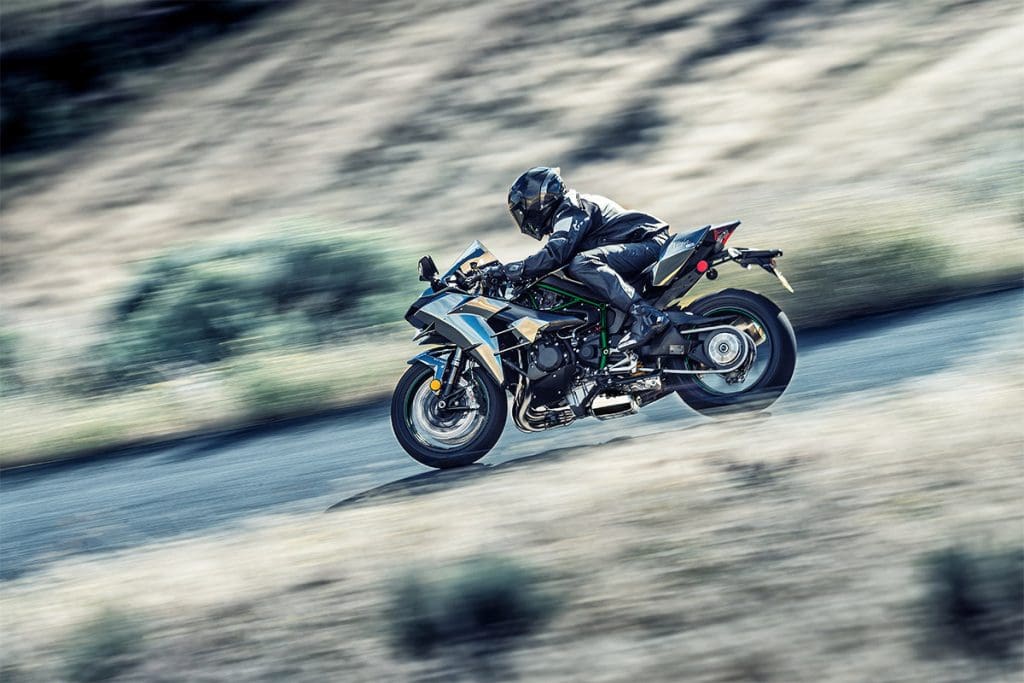
Model Overview
Model Overview
General Info
General Info
- Price: $29,500 USD / $33,000 CAD (H2) – $33,000 USD / $37,000 CAD (H2 Carbon)
- Key Features:
- Kawasaki Cornering Management Function (KCMF)
- Kawasaki Traction Control (KTRC)
- Kawasaki Launch Control Mode (KLCM)
- Kawasaki Intelligent Anti-lock Brake System (KIBS)
- Kawasaki Engine Brake Control
- Kawasaki Quick Shifter (KQS) (upshift & downshift)
- Öhlins Electronic Steering Damper
Main Specs
- Engine: 998cc Liquid -cooled, 4-stroke, In-Line Four, DOHC, 16-valve
- Power: 228.0 HP (166.4 kW) @ 11500 RPM
- Torque: 141.7 Nm (104.9 ft.lbs) @ 11000 RPM
- Wet Weight: 524.8 lbs (238.1 kg)
- Seat Height: 32.5 inches (825.5 mm) at lowest point
Competitors
- Ducati Panigale V4
- BMW S 1000 RR
- Aprilia RSV4 1100 Factory
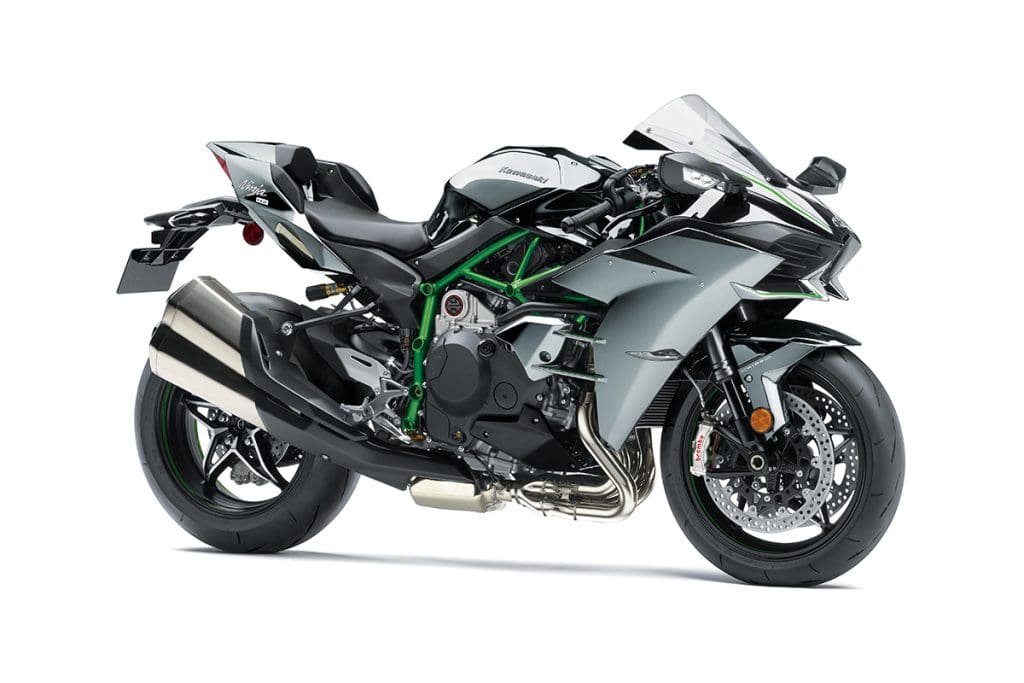
2021 Kawasaki Ninja H2 and H2 Carbon Specifications
2021 Kawasaki Ninja H2 and H2 Carbon Specifications
ENGINE | |
| Engine | 998 cc, Liquid -cooled, 4-stroke, In-Line Four, DOHC, 16-valve |
| Power | 228 Hp |
| Bore x Stroke | 76.0 x 55.0mm |
| Compression Ratio | 8.5:1 |
| Fuel System | DFI® with 50mm throttle bodies (4) with dual injection ; Kawasaki Supercharger |
| Starter | Electric |
| Maximum Torque | 104.9 lb-ft @ 11,000 rpm |
DRIVETRAIN | |
| Clutch | |
| Transmission | 6-speed, return, dog-ring |
| Final Drive | Sealed chain |
CHASSIS | |
| Suspension Front | 43mm inverted fork with adjustable rebound and compression damping, spring preload adjustability and top-out springs/4.7 in |
| Suspension Rear | Uni-Trak®, Öhlins TTX36 gas charged shock with piggyback reservoir, 22-way compression and rebound damping and adjustability and hand-turn spring preload adjustability, and top-outspring/5.3 in |
| Brakes Front | Dual radial-mount, opposed 4-piston Brembo Stylema® calipers, dual semi-floating 330mm discs, KIBS ABS |
| Brakes Rear | Opposed 2-piston calipers, single 250mm disc, KIBS ABS |
| Tires Front | 120/70 ZR17 (58W) |
| Tires Rear | 200/55 ZR17 (78W) |
| Fuel Tank Capacity | 4.5 gal |
| Color | Mirror Coated Black |
ELECTRICAL | |
| Ignition | Digital |
| Spark Plugs | |
| Headlight | LED |
| Tail Light | LED |
DIMENSIONS | |
| Overall Length | 82.1 in |
| Overall Width | 30.3 in |
| Overall Height | 44.3 in |
| Wheelbase | 57.3 in |
| Ground Clearance | 5.1 in |
| Seat Height | 32.5 in |
| Curb Weight | 524.8 lb |
WARRANTY | |
| Warranty | 12 Month Limited Warranty |
Kawasaki Protection Plus

| 12, 24, 36 or 48 months |
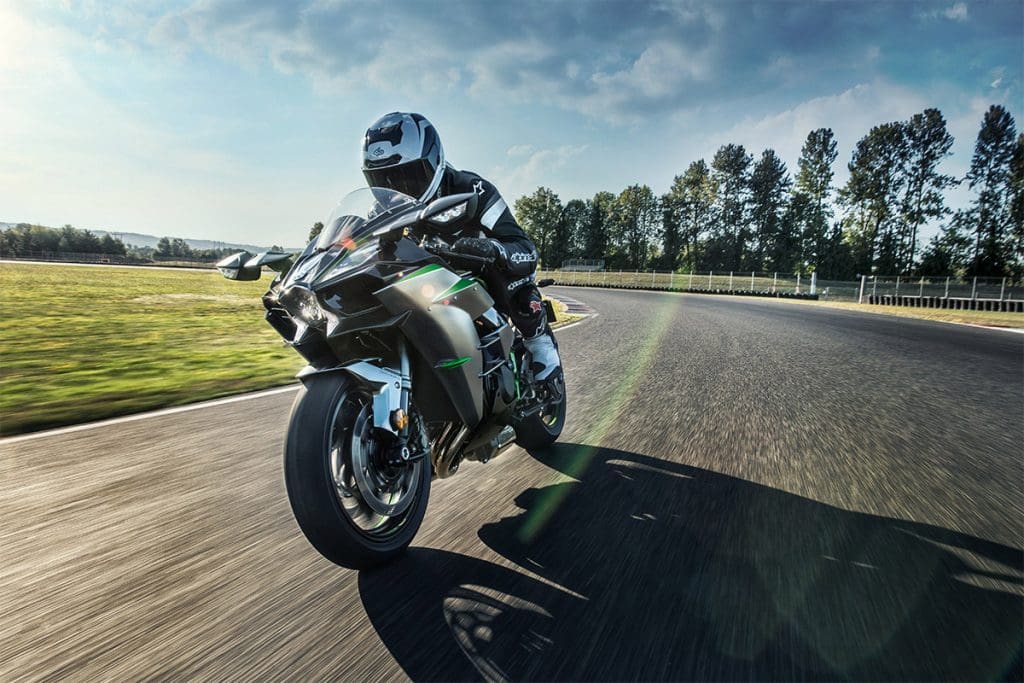
2021 Kawasaki Ninja H2 and H2 Carbon Features
2021 Kawasaki Ninja H2 and H2 Carbon Features
Assist & Slipper Clutch
Based on feedback from racing activities, the Assist & Slipper Clutch uses two types of cams (an assist cam and a slipper cam) to either drive the clutch hub and operating plate together or apart.Under normal operation, the assist cam functions as a self-servo mechanism, pulling the clutch hub and operating plate together to compress the clutch plates. This allows the total clutch spring load to be reduced, resulting in a lighter clutch lever feel when operating the clutch.
When excessive engine braking occurs – as a result of quick downshifts (or an accidental downshift) – the slipper cam comes into play, forcing the clutch hub and operating plate apart. This relieves pressure on the clutch plates to reduce back-torque and helps prevent the rear tire from hopping and skidding. This race-style function is particularly useful when sport or track riding.
Economical Riding Indicator
Using high-precision electronic control for engine management, Kawasaki models can achieve a high level of fuel efficiency. However, fuel consumption is greatly affected by throttle use, gear selection, and other elements under the rider’s control. The Economical Riding Indicator is a function that indicates when current riding conditions are consuming a low amount of fuel. The system continuously monitors fuel consumption, regardless of vehicle speed, engine speed, throttle position and other riding conditions. When fuel consumption is low for a given speed (i.e. fuel efficiency is high), an “ECO” mark appears on the instrument panel’s LCD screen. By riding so that the “ECO” mark remains on, fuel consumption can be reduced.While effective vehicle speed and engine speed may vary by model, paying attention to conditions that cause the “ECO” mark to appear can help riders improve their fuel efficiency – a handy way to increase cruising range. Further, keeping fuel consumption low also helps minimize negative impact on the environment.
Electronic Throttle Valves
Kawasaki’s fully electronic throttle actuation system enables the ECU to control the volume of both the fuel (via fuel injectors) and the air (via throttle valves) delivered to the engine. Ideal fuel injection and throttle valve position results in smooth, natural engine response and the ideal engine output. The system also makes a significant contribution to reduced emissions.Electronic throttle valves also enable more precise control of electronic engine management systems like S-KTRC and KTRC, and allow the implementation of electronic systems like KLCM, Kawasaki Engine Brake Control, and Electronic Cruise Control.
Kawasaki Engine Brake Control
The Kawasaki Engine Brake Control system allows riders to select the amount of engine braking they prefer. When the system is activated, the engine braking effect is reduced, providing less interference when riding on the track.KLCM (Kawasaki Launch Control Mode)
Designed to assist riders by optimizing acceleration from a stop, KLCM electronically manages engine output to minimize wheel spin when moving off. With the clutch lever pulled in and the system activated, engine speed is limited to a determined speed while the rider holds the throttle open. Once the rider releases the clutch lever to engage the clutch, engine speed is allowed to increase, but power is regulated to minimize wheel spin and help keep the front wheel on the ground. The system disengages automatically once a predetermined speed has been reached, or when the rider shifts into third gear. Depending on the model, riders can choose from multiple modes, each offering a progressively greater level of intrusion.KCMF (Kawasaki Cornering Management Function)
Using the latest evolution of Kawasaki’s advanced modeling software and feedback from a compact IMU (Inertial Measurement Unit) that gives an even clearer real-time picture of chassis orientation, KCMF monitors engine and chassis parameters throughout the corner – from entry, through the apex, to corner exit – modulating brake force and engine power to facilitate smooth transition from acceleration to braking and back again, and to assist riders in tracing their intended line through the corner. The systems that KCMF oversees vary by model, but may include:• S-KTRC/KTRC (including traction management and wheel lift management)
• KLCM (including traction management and wheel lift management)
– Designed to optimize acceleration from a stop
• KIBS (including pitching management and corner braking management)
• Kawasaki Engine Brake Control
KTRC (Kawasaki Traction Control)
KTRC, Kawasaki’s advanced traction control system provides both enhanced sport riding performance and the peace of mind to negotiate slippery surfaces with confidence. Multiple rider-selectable modes (the number of modes varies by model) offer progressively greater levels of intrusion to suit the riding situation and rider preference.Less intrusive modes maintain optimum traction during cornering. Designed with sport riding in mind, they facilitate acceleration out of corners by maximizing forward drive from the rear wheel. And because Kawasaki’s sophisticated software bases its dynamic analysis on the chassis’ orientation relative to the track surface (rather than relative to a horizontal plane), it is able to take into account corner camber, gradient, etc., and adapt accordingly.
In the more intrusive modes (and for some models, in any mode), when excessive wheel spin is detected, engine output is reduced to allow grip to be regained, effectively enabling riders to negotiate both short, slippery patches (train tracks or manhole covers) and extended stretches of bad roads (wet pavement, cobblestone, gravel) with confidence.
Models equipped with IMU incorporate chassis-orientation feedback to offer even more precise management.
Smartphone Connectivity
Clever technology enables riders to connect to their motorcycle wirelessly. Using the smartphone application “RIDEOLOGY THE APP,” a number of instrument functions can be accessed, contributing to an enhanced motorcycling experience. Vehicle information (such as the odometer, fuel gauge, maintenance schedule, etc) can be viewed on the smartphone. Riding logs (varies by model, but may include GPS route, gear position, rpm, and other information) can be viewed on the smartphone. When connected, telephone (call, mail) notices are displayed on the instrument panel. Riders can also make changes to their motorcycle’s instrument display settings (preferred units, clock and date setting, etc) via the smartphone. And on certain models, it is even possible to check and adjust vehicle settings (such as Rider Mode, electronic rider support features, and payload settings) using the smartphone.Supercharged Engine
Drawing on the know-how and technology possessed by the Kawasaki Heavy Industries, Ltd. (KHI), Kawasaki’s supercharged engine delivers high engine output while maintaining a compact design. The key to achieving this incredible performance lies in the engine’s supercharger – a motorcycle-specific unit designed completely in-house with technology from the Kawasaki Gas Turbine & Machinery Company, Aerospace Company and Corporate Technology Division.One of the greatest benefits of designing the supercharger in-house and tailoring its design to match the engine’s characteristics was that engineers were able to achieve high-efficiency operation over a wide range of conditions – something that would not have been possible by simply dropping in or trying to adapt an aftermarket automotive supercharger.
The importance of high efficiency in a supercharger is that, as the air is compressed, power-robbing heat gain is minimal. And while many superchargers are able to offer high-efficiency operation in a very limited range of conditions, the Kawasaki supercharger offers high efficiency over a wide range of pressure ratios and flow rates – meaning over a wide range of engine speeds and vehicle speeds. This wide range of efficient operation (similar to having a wide power band) easily translates to strong acceleration. The supercharger’s high efficiency and minimal heat gain also meant that an intercooler was unnecessary, greatly saving weight and space, and enabling the engine’s compact design.
2021 Kawasaki Ninja H2 and H2 Carbon Photos
2021 Kawasaki Ninja H2 and H2 Carbon Photos

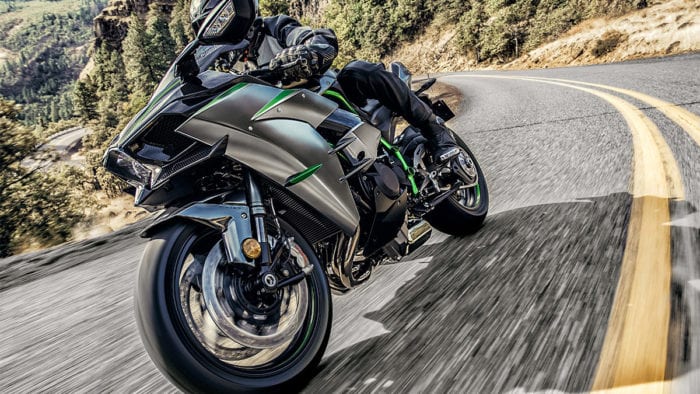
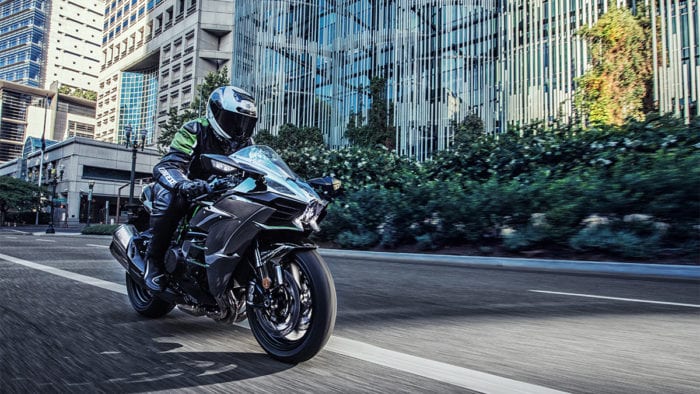


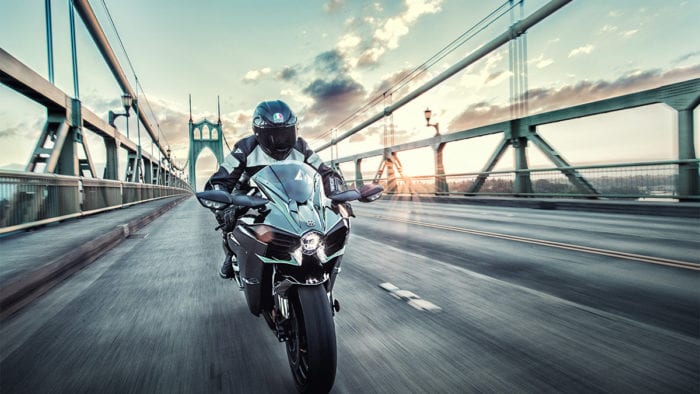

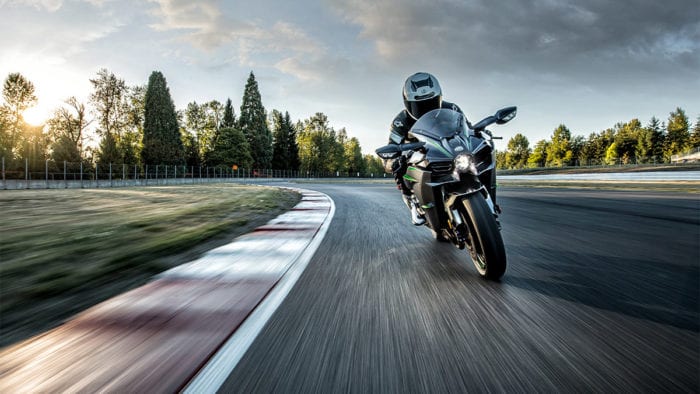
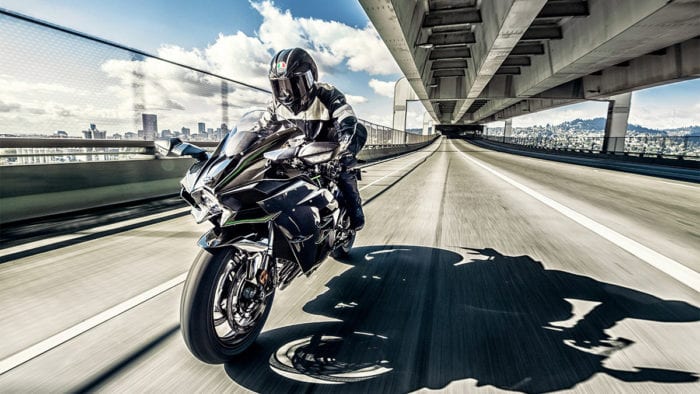
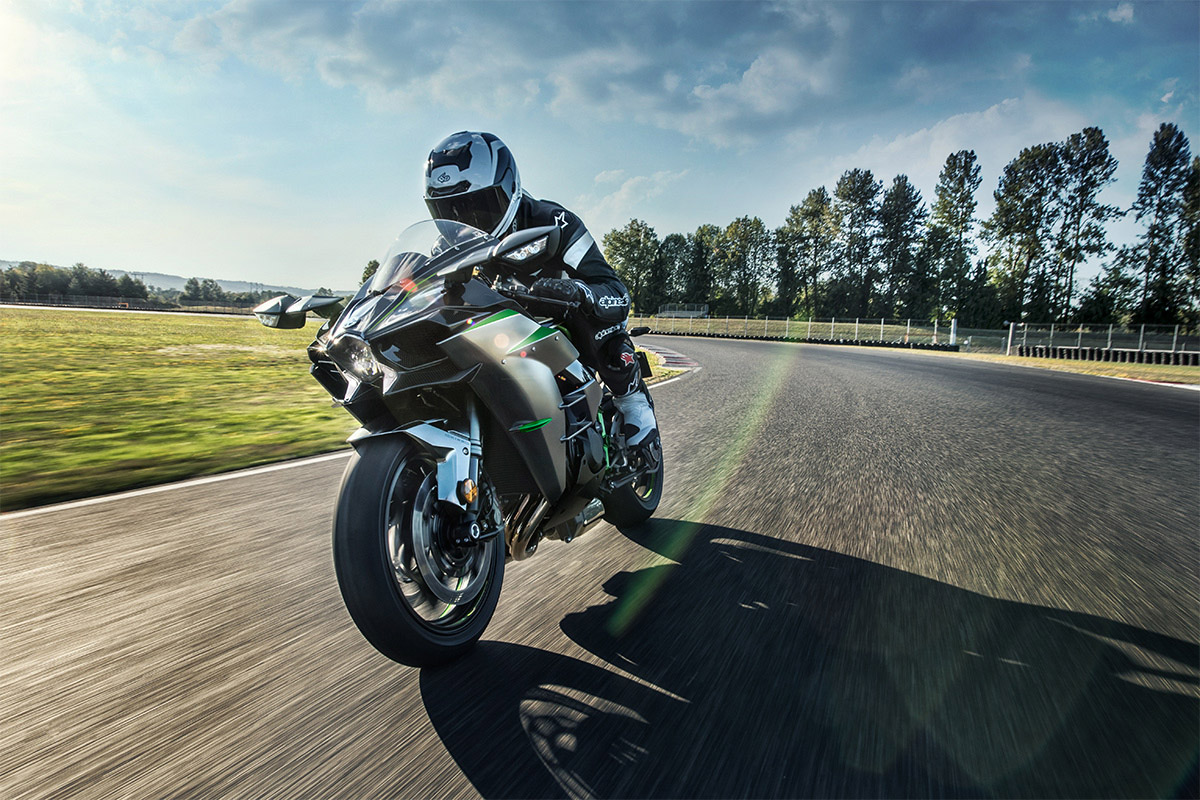
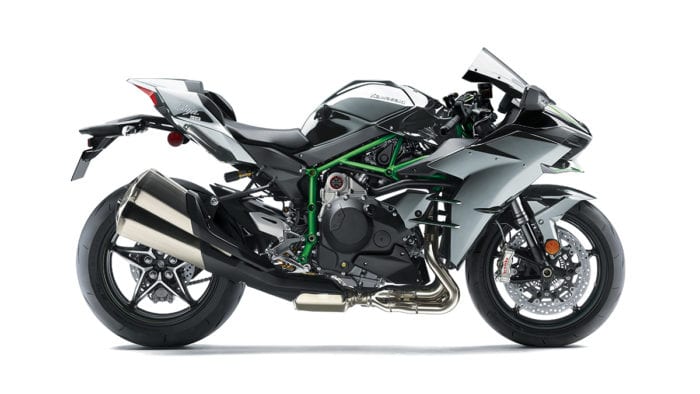
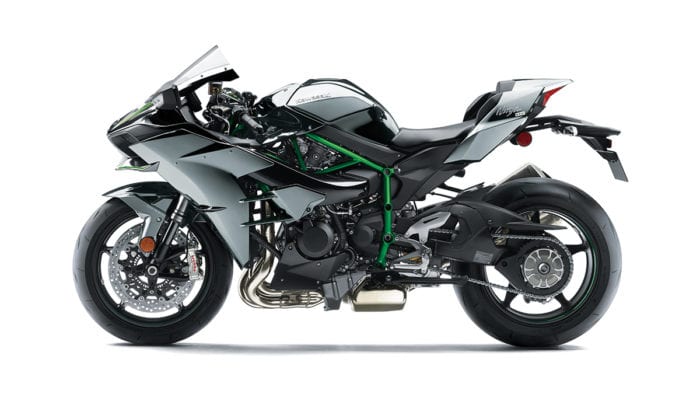
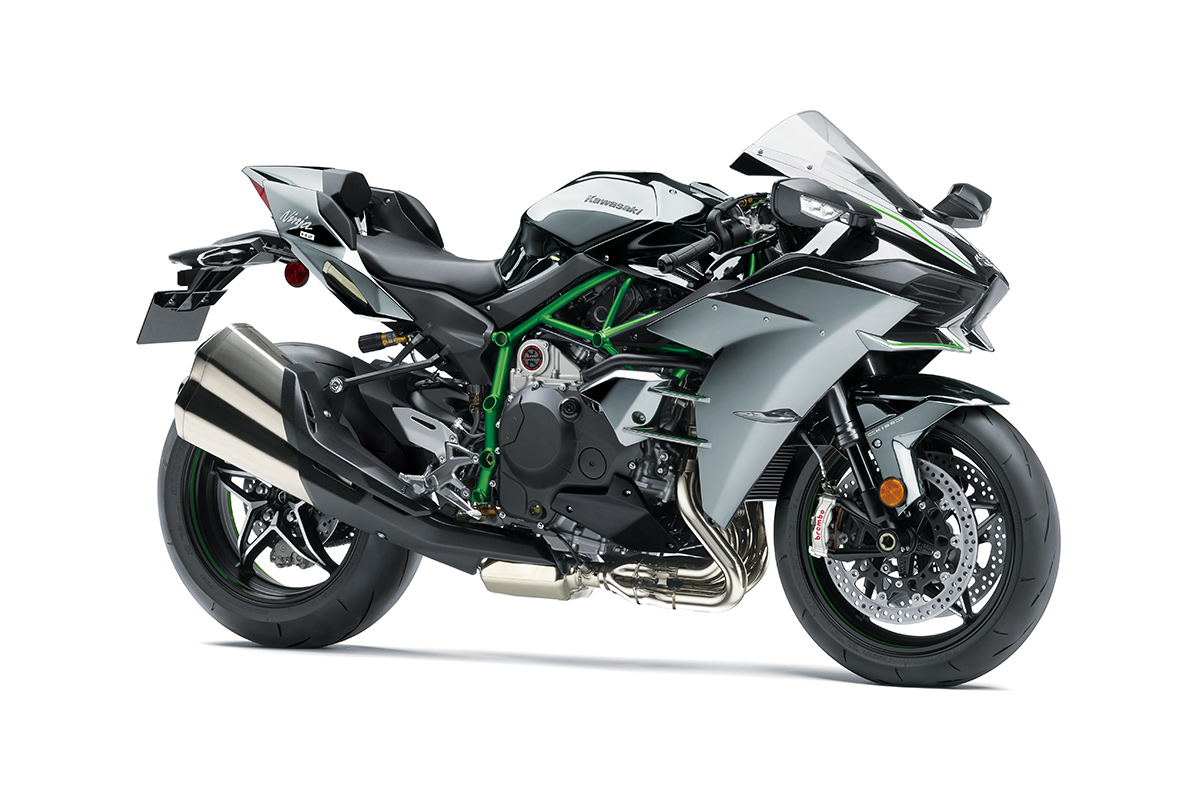
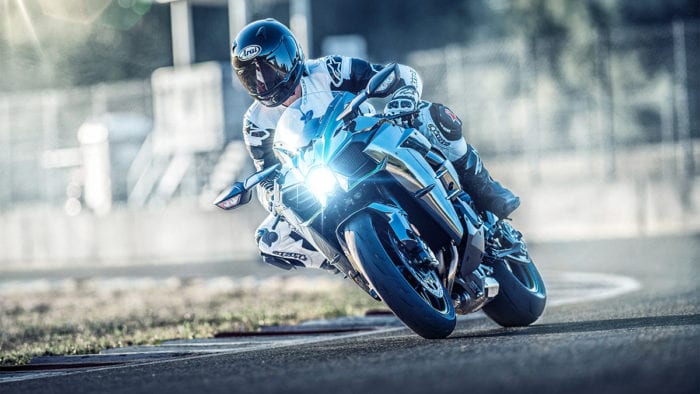

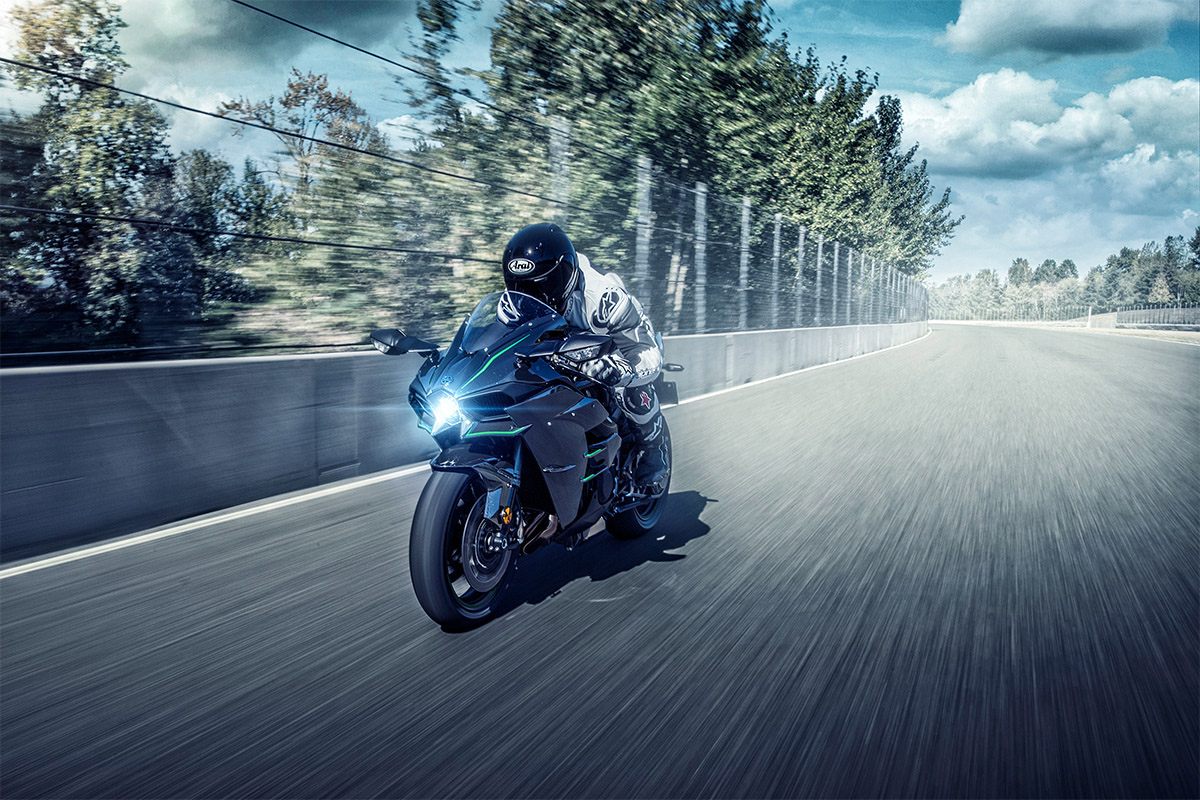
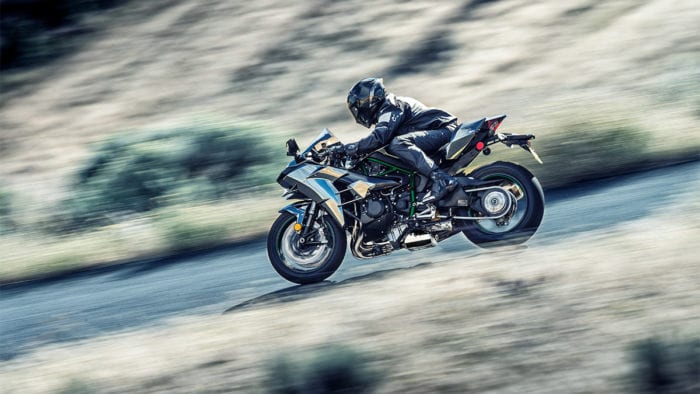





2021 Kawasaki Ninja H2 and H2 Carbon Videos
2021 Kawasaki Ninja H2 and H2 Carbon Videos
Links
Links
Kawasaki Official Websites
Social Media Links
The post 2021 Kawasaki Ninja H2 and H2 Carbon [Model Overview] appeared first on webBikeWorld.
Continue reading...


